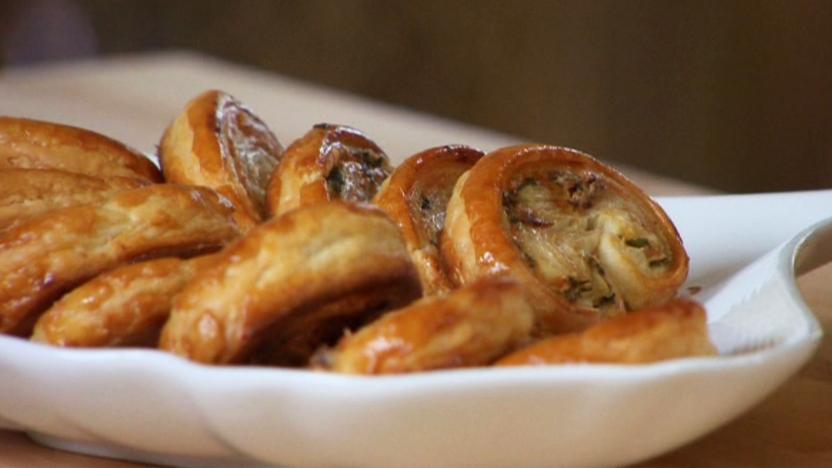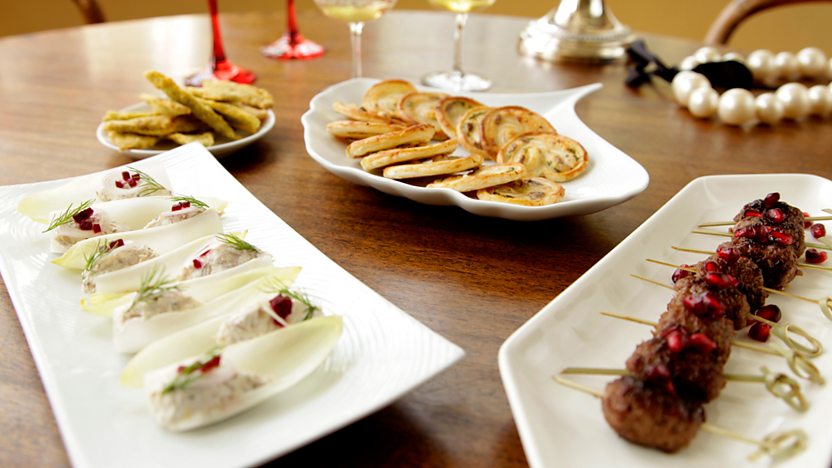Sage and parmesan palmiers


This quintessentially French savoury pastry can be filled with anything you like and looks sensational.
Ingredients
- 1 tbsp olive oil
- small handful fresh sage leaves
- 200g/7oz ready-made puff pastry
- plain flour, for dusting
- 8 tbsp freshly grated parmesan
- 12 tinned anchovies (preserved in oil), drained, finely chopped (optional)
- freshly ground black pepper
- 1 free-range egg, lightly beaten
- dry sherry, to serve (optional)
Method
Heat the olive oil in a frying pan over a medium heat. Add the sage leaves and fry for 1-2 minutes, or until crisp, then remove the sage leaves from the pan using a slotted spoon and set aside to drain on a plate lined with kitchen paper.
Roll out the puff pastry onto lightly floured work surface until it measures approximately 20cm x 30cm/8in x 12in. Trim the edges using a sharp knife.
Sprinkle the fried sage leaves, parmesan and anchovies (if using) over the puff pastry and season, to taste, with freshly ground black pepper.
With the longest side of the pastry rectangle facing you, roll each short side of the rectangle into the centre of the pastry so that they meet in the middle (the rolled pastry should resemble a scroll).
Brush the rolled pastry all over with the beaten egg and chill in the fridge for 30 minutes. Reserve any remaining egg.
When the pastry has chilled, preheat the oven to 200C/400F/Gas 6. Line a baking tray with a silicone sheet.
Brush the rolled pastry all over with the beaten egg once again, then, using a very sharp knife, cut it into 10 slices (cut so that each slice comprises two circles of pastry).
Place the slices of pastry onto the prepared baking tray and bake for 10-12 minutes, or until the pastry has puffed up and is golden-brown. Set aside to cool slightly before serving with a glass of sherry, if desired.
Recipe Tips
When the rolled pastry has been brushed with beaten egg it can be frozen for later use.
You can adapt this recipe to make goats’ cheese and herb palmiers by substituting the sage leaves and parmesan for one small handful of finely chopped fresh mixed herbs and 10 tablespoons of grated firm Welsh goats’ cheese (this topping also goes well with anchovies, if desired).



